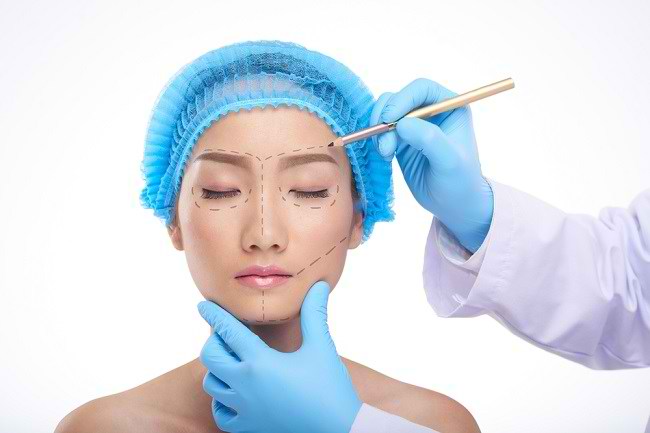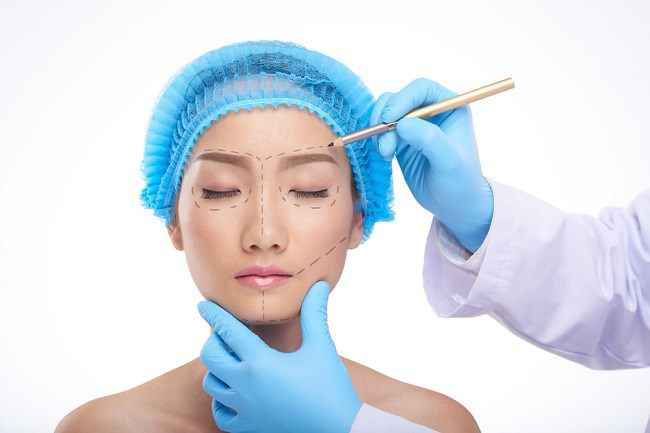Benefit facelift It is well known to tighten facial skin. Besides that, facelift can also be done to overcome other problems on the skin due to aging. However, this procedure has some risks that need to be considered.
With age, self-confidence can decrease because facial skin is no longer tight. Facelift or rhytidectomy It is often used as a way to make facial skin look younger. Not only that, this procedure can now also be done to reposition muscles, skin, and fat.

Benefit Facelift against facial aging
Facelift It is generally performed on patients aged 40–70 years. However, it is possible to do it in older patients. Best result facelift can be obtained if the patient still has skin elasticity, even though it has experienced aging.
Procedure facelift It can reduce sagging or folds of skin on the cheeks and jawline, as well as other changes that occur with age.
Result of procedure facelift it can last about 5–10 years. Even so, that does not mean the aging process stops altogether. This procedure also does not reduce fine wrinkles or skin damage from sun exposure.
Several other procedures are often performed in conjunction with facelift is necklift for neck, browlift for forehead, and eyelid surgery. Facial implants and injections filler or fat can also be done as a series of additional procedures in surgery facelift.
Preparation Before Living Facelift
Before performing the procedure facelift, you are required to consult a plastic surgeon to convey the goals and what changes are desired. The doctor will later ask about your health condition, including the medications you are taking and the surgical procedures you have had.
Next, the doctor will examine the condition of the skin and the structure of the face and neck. This examination aims to see if there are scars, abnormal skin conditions, or facial asymmetry.
You will be asked to stop taking aspirin, anti-inflammatory drugs, or herbal supplements because they can increase the risk of bleeding. The doctor will also give antibiotics before facelift done to reduce the risk of infection.
Operation Process Facelift and Recovery
Operation facelift begins with the administration of anesthesia and the formation of an incision that starts from the hairline at the temples, around the ears, and ends at the lower scalp.
Next, the skin and fat tissue will be removed from the muscle and connective tissue. This muscle and connective tissue can also be tightened by sewing.
After that, the skin will be pulled back to the desired position and the excess skin will be removed. When finished, the incision will be stitched back and bandaged. Procedure facelift usually lasts 2–6 hours, depending on your overall condition.
In the first 2-3 weeks after surgery, your face will experience bruising and swelling. If the surgical wound has closed, the doctor will remove the stitches during a routine check-up schedule. However, keep in mind that the recovery process after facelift not the same for everyone.
Some Risks and Complications Facelift
There are some risks and complications that can occur after the procedure faceliftincluding:
- Bruises
- Bleeding
- Infection
- Widening or thickening of the scar after surgery
Besides that, facelift can also cause hair loss around the incision site, asymmetry between the two sides of the face, and temporary nerve damage, characterized by impaired muscle function or numbness.
In addition, there are several groups who are at high risk of side effects and complications during and after undergoing the procedure faceliftincluding:
- Patients with diabetes and hypertension
- Smoker
- People with a history of repeated weight gain and loss
- People with a history of or high risk of abnormal bleeding
This group has a high risk of bleeding, longer wound healing, hematomas, and heart complications.
You should also be aware of some of the symptoms that can appear after the procedure faceliftlike:
- Bleeding and pus appears in the surgical wound
- Fever
- The stitches on the surgical wound come off prematurely
- Swelling, redness, and severe pain in the area around the surgery
If you feel the symptoms as mentioned above, immediately consult a doctor for further treatment.
Alternative Options Facelift to Rejuvenate Facial Skin
In addition to the facelift procedure, you can also have firm and wrinkle-free facial skin by trying several other alternative treatments, such as:
- Thread-liftwhich is a technique of pulling the skin from the chin to the temples using a special kind of needle and thread
- Botox injections, which is a method for fading fine lines, wrinkles, or wrinkles, by weakening muscles or blocking certain nerves
- Thermage basicswhich is a technique that uses radio frequency waves to heat the skin and trigger the production of collagen to make the skin firm
- Non-ablative laser basicswhich is a technique to help the skin produce collagen, reduce fine lines, and disguise dark spots
First consider the risks and benefits facelift if you are interested in doing it. You can consult a doctor to get more information about this procedure, as well as about other alternative treatments that suit your skin problem and condition.











